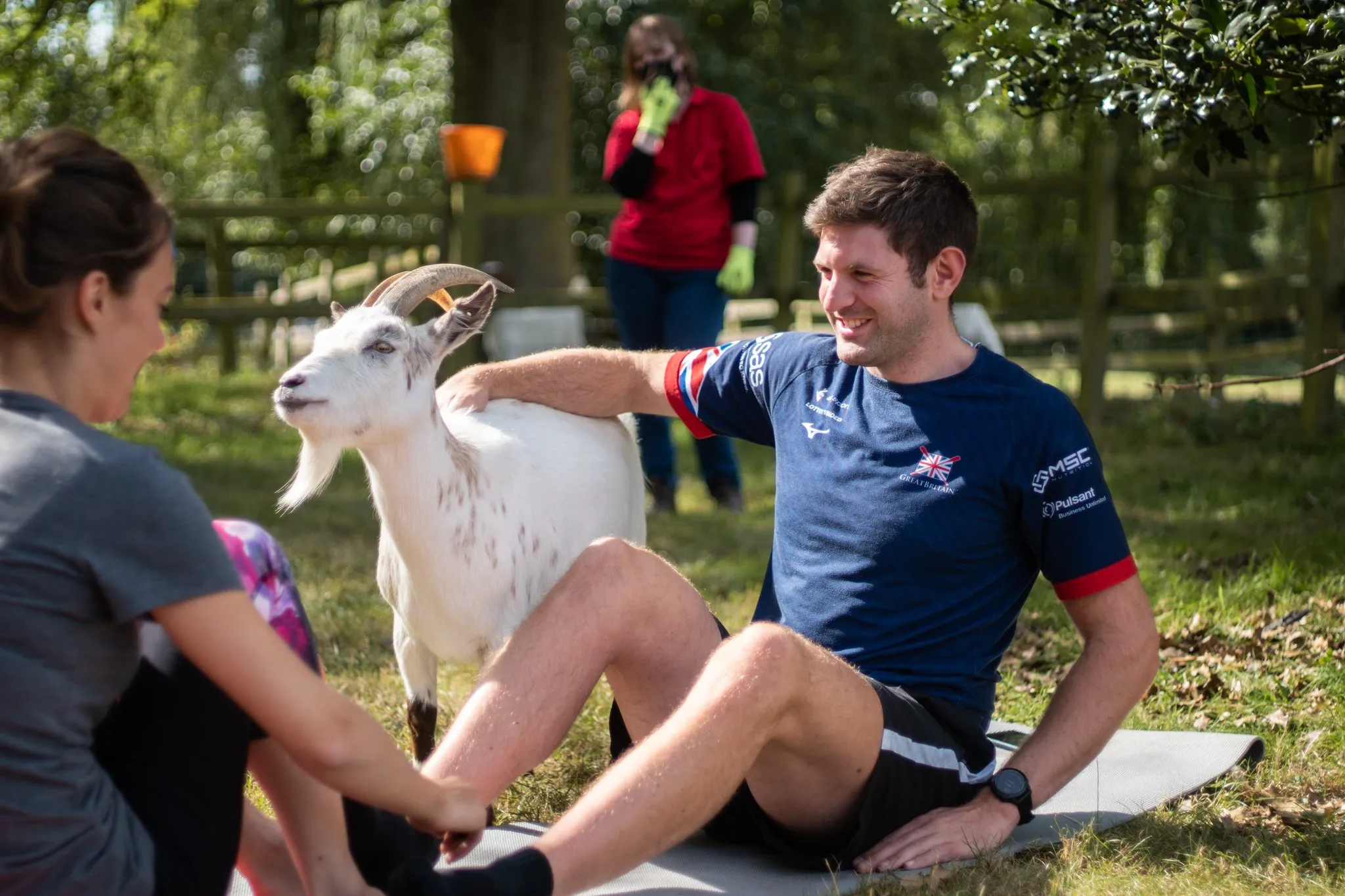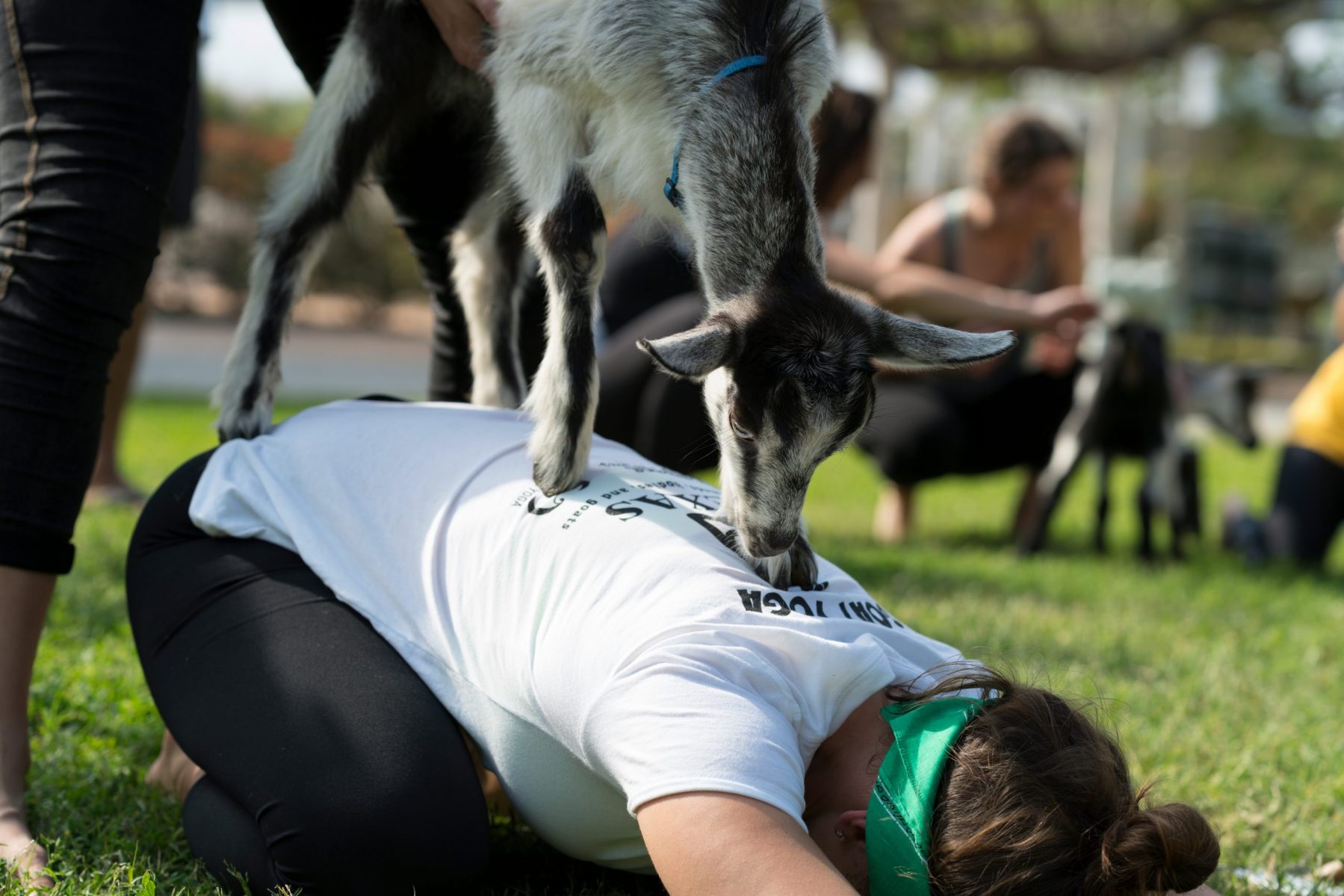I. Introduction
In recent years, the popularity of goat yoga has skyrocketed. It combines the benefits of yoga with the relaxing presence of goats, making it a unique and enjoyable experience for many. However, with its growing popularity, it is essential to assess the potential negative aspects of this practice. This article aims to delve into the risks and concerns associated with goat yoga and shed light on various factors that need to be considered.
II. Understanding the Risks and Concerns of Goat Yoga
A. Physical Health Risks
One concern regarding goat yoga is the potential for injuries due to uncontrolled animal behavior. Goats are naturally curious and may interact with participants in unpredictable ways, increasing the risk of accidental collisions or falls during yoga poses. Participants should be aware of this risk and exercise caution when practicing goat yoga to avoid any physical harm.
Additionally, for individuals with allergies or sensitivities, the presence of goats in close proximity can pose health concerns. Animal dander and waste can trigger allergic reactions or exacerbate existing respiratory conditions, leading to discomfort or health complications. It is crucial for individuals with such sensitivities to consider their well-being before participating in goat yoga.
B. Animal Welfare Considerations

While goat yoga may seem like a delightful experience for humans, it is vital to consider the impact on the well-being and stress levels of the goats involved. While some goats may enjoy the interaction, others may find it stressful or overwhelming. It is crucial to ensure that the goats are treated with care and their well-being is prioritized throughout the practice.
Many people also have ethical concerns about exploiting animals for entertainment purposes. Using animals as props for human enjoyment can raise questions about their treatment and the ethical implications of such practices. It is important to reflect on the principles of animal welfare and consider whether the use of goats in yoga classes aligns with such values.
C. Hygiene and Sanitary Issues
One significant concern with goat yoga is the potential transmission of zoonotic diseases. Zoonotic diseases are infections that can spread between animals and humans. Goats can carry various pathogens, such as E. coli or Salmonella, which can pose a risk to human health if proper hygiene practices are not followed. It is crucial for organizers to implement strict hygiene protocols, including regular animal health checks and ensuring participants maintain proper personal hygiene.
Another aspect to consider is the contamination of yoga mats and facilities with animal waste. Any contact with animal waste, even in small amounts, can result in the spread of bacteria or parasites. It is essential for yoga studios or event organizers to maintain cleanliness and implement measures to minimize the risk of contamination, such as providing sanitized mats and frequent cleaning of the premises.
III. Misleading Claims and Lack of Scientific Evidence
A. Questionable Benefits

Despite the popularity of goat yoga, there is a lack of scientific research supporting specific therapeutic benefits associated with this practice. Many claims about the positive effects of goat yoga on mental and physical health are anecdotal and subjective, lacking empirical evidence. Without robust scientific studies, it becomes challenging to validate and quantify the benefits offered by goat yoga accurately.
Additionally, the potential for misrepresentation and exaggerated claims is a concern. Some proponents of goat yoga may exaggerate the benefits in order to attract more participants and financial gain. This misleading information can create unrealistic expectations for individuals seeking holistic wellness.
B. Distraction and Reduced Focus
One of the primary concerns of practicing yoga with goats is the difficulty in maintaining concentration and mindfulness amidst animal interactions. Goats are naturally curious and playful animals, which can lead to unpredictable behavior during yoga sessions. Their presence may create distractions, making it challenging for participants to focus on their breath, movement, and inner experience.
The presence of goats can diminish the effectiveness of the yoga practice itself. Yoga is traditionally seen as a tool for self-reflection, self-awareness, and connecting with one’s inner self. However, the presence of animals can shift the focus away from the introspective nature of yoga, creating a more entertaining and less contemplative environment.
IV. The Importance of Responsible and Ethical Practices
A. Implementing Safety Guidelines

In order to address the risks associated with goat yoga, it is crucial to implement safety guidelines for instructors and participants. Proper training for instructors is essential to ensure they can effectively manage and control the goats during sessions. Participants should also receive guidance on how to interact with the animals safely to reduce the likelihood of injuries and accidents.
Establishing clear boundaries is important to mitigate potential risks. Setting limitations on the level of physical interaction between participants and goats can help maintain focus on the yoga practice while still allowing for a unique and enjoyable experience.
B. Prioritizing Animal Well-being
To ensure ethical practices, monitoring and addressing the stress levels of goats used in goat yoga is crucial. Goats are sensitive animals, and the presence of a large group of people, noise, and unfamiliar environments can be overwhelming for them. It is essential to take regular breaks to allow the goats to rest and seek shelter when needed.
Collaborating with animal welfare organizations can promote responsible and ethical practices in goat yoga. These organizations can provide guidance on goat welfare, share best practices, and conduct assessments to ensure the well-being of the animals involved.
C. Promoting Evidence-Based Practices

Encouraging research into the benefits and limitations of goat yoga is essential to gain a better understanding of its potential therapeutic effects. Scientific studies can help identify the specific mechanisms through which goat yoga may impact mental and physical health, as well as explore any potential risks or limitations.
Educating the public about evidence-based approaches to holistic wellness is also crucial. Providing individuals with accurate information about the benefits and limitations of different holistic practices, including goat yoga, empowers them to make informed decisions about their personal well-being.
V. Conclusion
While goat yoga may offer enjoyable and unique experiences, it is important to critically evaluate its claims and consider the potential drawbacks. The lack of scientific evidence supporting specific therapeutic benefits and the potential for distractions during practice raise concerns about the efficacy and integrity of this trend.
Responsible and ethical practices, including implementing safety guidelines, prioritizing animal well-being, and promoting evidence-based approaches, are essential to mitigate associated risks and ensure a more balanced and meaningful yoga experience. By adopting a more critical and introspective approach, individuals can make informed choices about their holistic well-being while respecting animal welfare.

